
views
Marking the Area

Check for utilities under the area you want to add pavers to. Before breaking any ground, make sure to contact your local utility organizations to see if there are any pipes or wires below the area you want to dig. In the United States, this can be done by calling 811. Other country-specific Dial Before You Dig hotlines and websites include: Australia: Call 1100. Canada: Visit Enbridge.com. Ireland: Visit beforeUdig.ie. United Kingdom: Call 0800 0853 865.
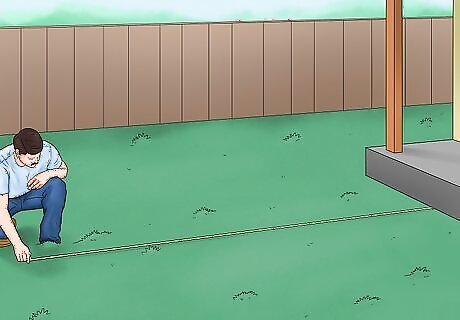
Find the area of the spot you will be adding pavers to. Use measuring tape to find the length and width of the area you will be working in. Multiply these two numbers together to find the square area of the location. For safety, add about 6 to 8 inches (15 to 20 cm) of space around the entire perimeter of your spot before measuring.

Calculate how many pavers you will need. Use a measuring tape to find the length and width of one patio paver. Multiply these two numbers together to find the square foot or square meter value of each segment. Divide the area of your plot by this number to find out how many pavers you will need. If your pavers are designed to lock together, measure them when they are connected. To make calculations easier, treat each combined segment as one paver.
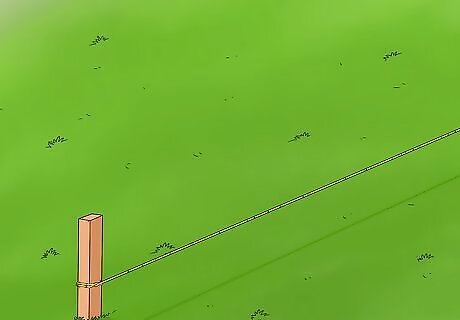
Outline the area with paint or string. Use a small amount of brightly-colored spray paint or string to help you visualize your work area. If using paint, spray it around the perimeter to create an outline. If using string, run it along the outside of the work area and use small stakes to secure it to the ground. Spray the stakes with brightly-colored spray paint so you don't accidentally trip over them.
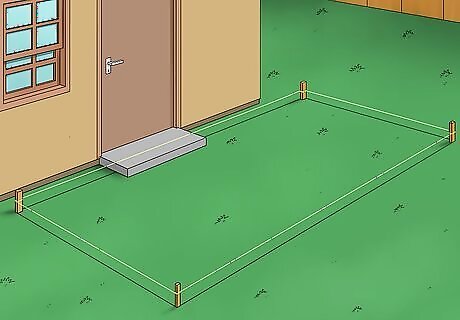
Use string to mark the finished level for your pavers. Place small stakes around the perimeter of the marked spot. Tie white string between the stakes, creating lines across the plot of land. Adjust each stake until the strings rest at the height each paver will sit at once the project is complete. You can also rent a rotating laser level and transit rod to measure the grade with.
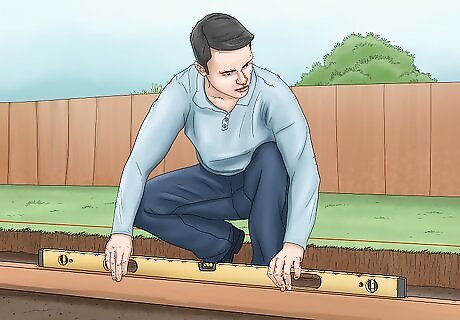
Slope your strings by .25 inches (0.64 cm) for every 1 foot (30 cm) of land. After they have been leveled according to where your pavers will sit, angle your string so that it slopes down by about .25 inches (0.64 cm) for every 1 foot (30 cm) of land. You can do this by taking the length of the plot, finding the corresponding slope angle, and lowering your stakes nearest the yard or street down by the appropriate amount. If possible, angle your slope away from your house or building and toward lower ground. If you plan on leaving space between pavers, sloping the strings may not be necessary. Avoid driving the stakes into the ground over any utility lines.
Digging Up the Land
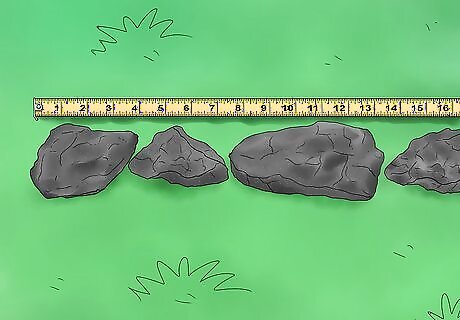
Find out how much gravel you will need. The amount of base materials necessary depends largely on the project in question. However, in most cases, you will need about 6 inches (15 cm) of gravel for patios, yards, and other small projects. If necessary, consult a local landscaper or home center employee for advice based on your local climate and conditions.

Calculate how deep the area needs to be. Add the amount of gravel you need to the measured height of one paver. Then, add an extra 3 inches (7.6 cm) to your measurement to accommodate sand. This number indicates the distance you will need to create between the bottom of your pit and the strings above.
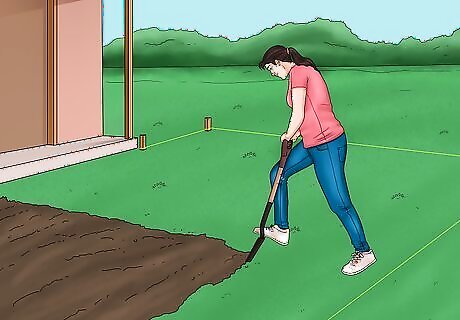
Dig up the area. Use a shovel or rototiller to dig up the marked spot. Make sure to remove ground from the entire area, using the flat side of your tool to smooth the walls around the edges. If the strings are getting in your way, mark their positions on the stakes using tape and remove them temporarily. Make sure you have somewhere to put all the dug up soil before you start digging.
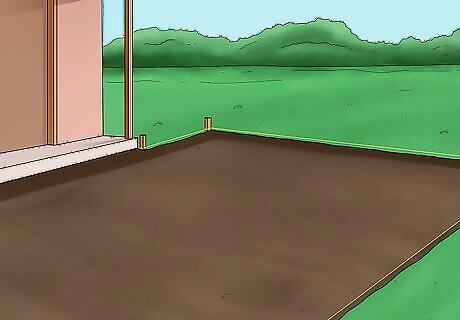
Measure the depth of the pit from multiple spots. To see if you’ve dug deep enough, use a measuring tape to find the distance between the bottom of the pit and the strings up top. Make sure to take measurements from multiple areas, including the center and corners, to ensure that the entire pit is even. If necessary, keep digging or fill in low spots. If you removed them while digging, reattach your strings before taking measurements.
Adding Gravel, Edge Restraints, and Sand
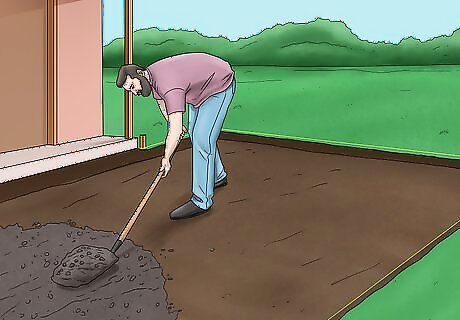
Add a base layer of gravel. Pour your gravel or other crushed rock into the excavated pit. After every 2 inches (5.1 cm), use a hand tamper or mechanical plate compactor to compress the layer into a fine, solid base. Add gravel until you are about 3 inches (7.6 cm) from the slope line, or the depth of one paver added to the 1 to 1.5 inches (2.5 to 3.8 cm) of space necessary to accommodate your sand.
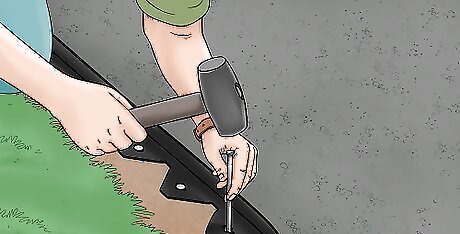
Install edge restraints around the perimeter. Edge restraints are small, long walls made of plastic, aluminum, steel, or precast concrete, and they are essential to making sure your pavers don’t move after you put them down. If your stones are regularly shaped, simply place your restraints around the perimeter of the excavated pit and secure them using nails or yard spikes. If your stones are irregularly shaped, you may need to cut the edges first using a jigsaw. Keep in mind that you may need to adjust the edge restraints after you install the pavers.
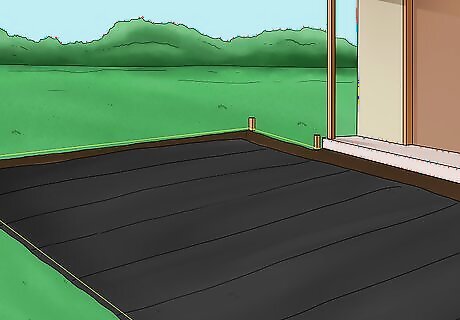
Put down a layer of landscape fabric (optional). For an extra defense against weeds, put down a layer of landscape fabric between the gravel and sand. This fabric prevents light from reaching the bottom layer of soil, making it harder for weeds to grow. Though it can be placed before the layer of gravel instead, laying it down after prevents sand from sifting into the cracks.
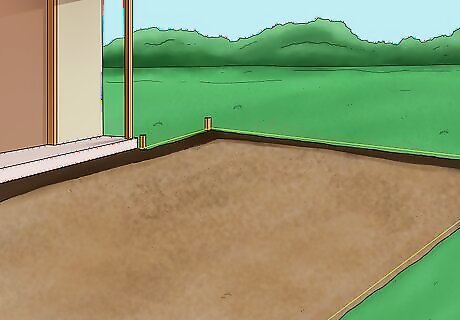
Add a layer of bedding sand. Pour a layer of coarse sand into the pit, filling it between 2 to 3 inches (5.1 to 7.6 cm) deep. Avoid fine sand and combination mixes cut with limestone or stone dust. The sand will help the pavers lock together, making sure they set properly. After pouring, use a measuring tape to make sure the distance between the top of the sand and your slope line equals the height of one paver. You can also lay a pipe that's the same thickness as the pavers on the sand to make sure the distance between the sand and slope lines is accurate.
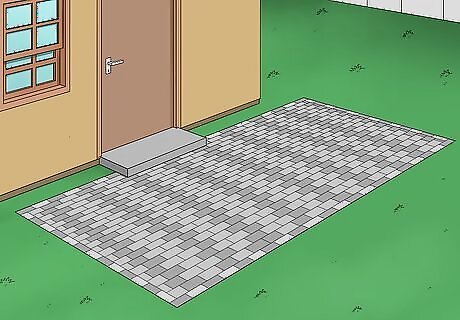
Smooth the ground. After all your materials have been added, slowly pull a hoe, screed board, or similar tool over the sand to make sure the top layer is entirely smooth with no bumps or waves. If necessary, place a level on the sand to test whether or not everything is flat. Once this step is complete, you will be ready to add the pavers.




















Comments
0 comment